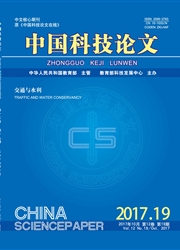

 中文摘要:
中文摘要:
采用酶学技术脱色/脱毒纺织染料是环境生物技术领域研究的热点。以真菌5319漆酶粗酶液对2种蒽醌类和3种偶氮类纺织活性染料进行脱色,实验研究了温度、pH、染料浓度、给酶量和介体对脱色效率的影响。在pH4.5、给酶量10U/L、45℃条件下,无介体存在时,漆酶对蒽醌类染料活性艳蓝X-BR和K—GR的脱色率均超过80%,而对偶氮类染料活性深蓝M-2GE、活性红KD-8B和活性艳橙-7RN脱色效果不佳,但在介体1-羟基苯并三唑或丁香酸甲酯存在时,漆酶对偶氮染料的脱色率均超过60%。真菌5319漆酶在这些工业纺织活性染料脱色方面具有潜在应用价值。
 英文摘要:
英文摘要:
Decolorization and detoxification of textile dyes by enzymes attracts attention in environmental biotechnology. In this study, we used the crude laccase from fungus No.5319, a newly isolated strain with high production of laccase, to decolorize 2 anthraquinone dyes and 3 azo dyes. The temperature, pH, dye concentration and laccase amount optimal for decolorization were tested. Over eighty percent of anthraquinone dyes (Reactive Brilliant Blue X-BR and K-GR) of 0.4 g/L were decolorized within 5 h by 10 U/L of laccase at pH 4.5 and 45 ℃ in the absence of mediators. In reverse, the decolorization of three azo dyes, Reactive Deep Blue M-2GE, Reactive Red KD-8B and Reactive Brilliant Orange K-7R, was relatively low without mediators. However, an addition of the mediator of 1-hydroxybenzotriazole or methyl-syringate remarkably improved the decolorization to over 60%. The results suggested that it is reseanable to use fungal laccase to decolorize the reactive dyes redundant in textile waste water.
 同期刊论文项目
同期刊论文项目
 同项目期刊论文
同项目期刊论文
 期刊信息
期刊信息
